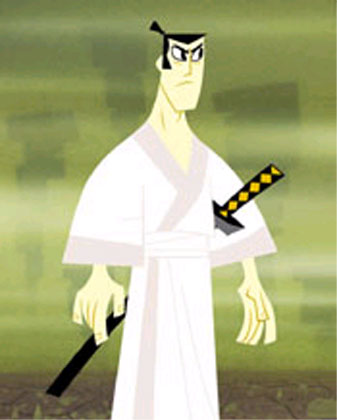gavi dvan wrote:its uses are very limited, especially when using bones
I've looked a bit deeper into the matter, to check if this is indeed not as useful for bone animation as you claimed. And I don't think there are many limitations for using this effect.

Another solution might be not to use black lines, but a outline color somewhat darker (or lighter if the fill color is rather dark) than the fill color and use an outline width smaller than 1.
I've used the following setup in the above animation:
bone layer with four child layers
masking -> hide all
1) arm with dark green 0.25 wide outline and green fill
2) copy of 1, outline removed
masking -> don't mask this layer
3) torso with green fill and no outline
masking -> + clear mask, then add this layer to it
4) neck
masking -> don't mask this layer
So, in essence I rigged the bones as usual (region binding, using child vector layers and bone offset); the arm layer had outlines. Then I copied the arm layer, removed the outline and positioned it underneath the original arm layer in the layers window. Then you set the masking for each layer.
Because of the region binding, both the arm layers will animate exactly the same.
I think the overall effect is much more subtle than with a thick black outline.

The same effect can also be accomplished using image layers, as you can see from the second animation.
So, I don't really see any limitations when using bones. The only limitation I see is that you can't bind layers to bones, because you use two layers on top of eachother instead of a single layer. This could pose problems if you want to bind a switch layer to a bone (e.g. for displaying different hand shapes). However, I'm sure Moho is capable enough to deal with that once you have found a solution to work around that (e.g. group the double layer and switch different group layers).




